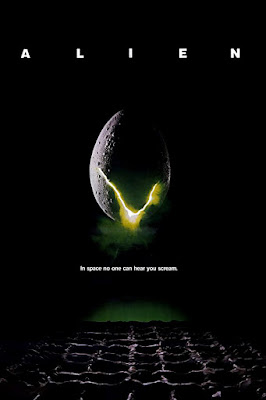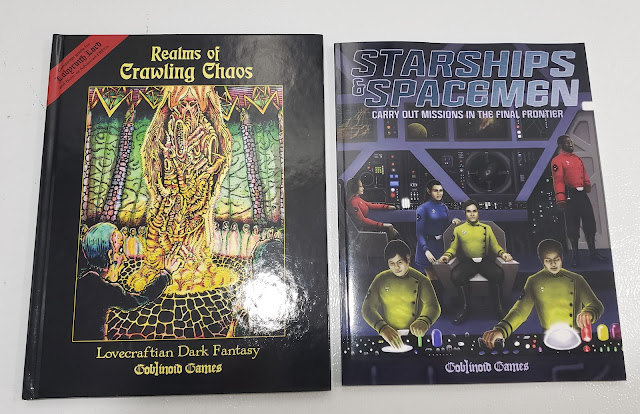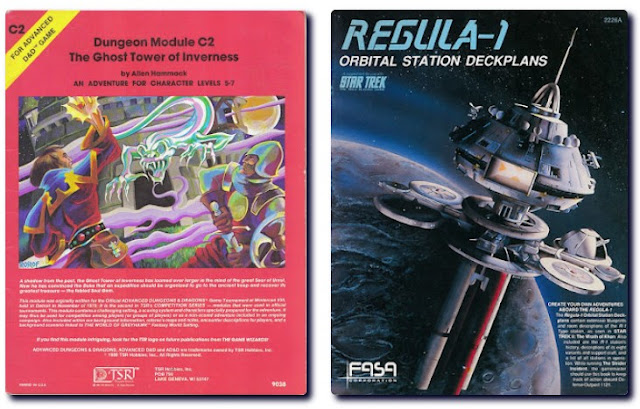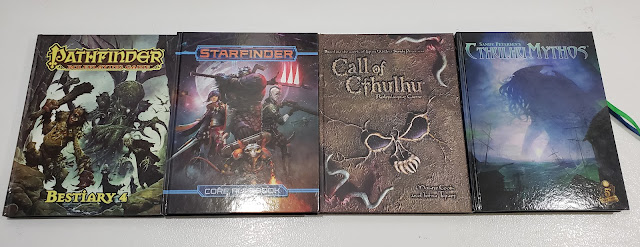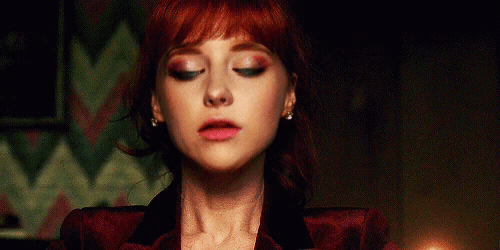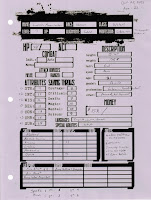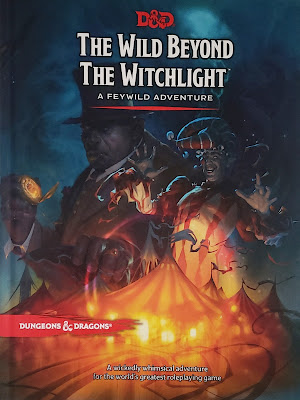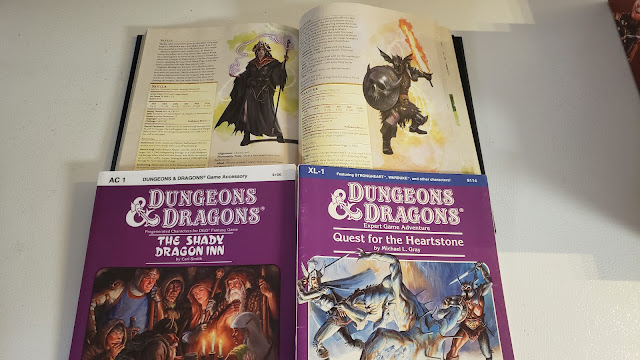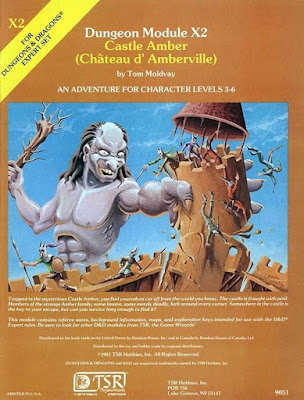Yesterday, I discussed mixing two of my current favorites from the Old-School RPG world into one gaming experience. Today, I want to discuss some specifics. Since it is Witchcraft Wednesday, I am going to talk about remixing the Old-School Essentials and ShadowDark Witches. I am sure you can do the same with the other classes as well.
Overlap
I mentioned yesterday there was already quite a bit of overlap between the two systems. Since today I want to focus on one class, the Witch, I am going to see where these two systems have some commonalities.
Basics. Both systems have a witch class. Both provide an old-school gaming experience to levels 10 (SD) and 14 (OSE), so what many consider the "prime" adventuring levels.
Both systems are built on a "Basic-era" aesthetic, and there is a lot of common ground on things like spells and monsters.
Class-wise, Level 1 in one game is about equal to Level 1 in the other, and so on. Spellcasters get the added benefit of repeat casting in ShadowDark. Armor classes and hit points work the same ways. All characters have the same basic six abilities ranging from 3 to 18. The bonuses are different, but not enough to make it matter really.
Humans are largely the same. Demi-humans like elves, dwarves, and halflings lose some of the things that make them special when moving from OSE to SD, i.e., loss of infravision/nightvision.
What are the differences though?
Differences
There are, in fact, a few differences between these two games that make all the differences in the world to their fanbases. I am not going to detail them all here, I am just interested in the rules that affect my interpretations of the witch classes.
Old-School Essentials
The OSE Witch is very much like my other OSR witches. She needs quite a bit of XP per level, more than the wizard at first, and she gains some powers (Occult Powers) over various levels. More than the Cleric or Magic-User, but less than the Druid. One of her powers is gaining a familiar at level 1.
ShadowDark
These witches use the same XP advancement as everyone else. She gets Talents just like the other characters do, but these are molded closer to the Occult Powers of other witches. Additionally, she gains a Patron and a Patron Boon.
Yesterday I proposed that gaining the additional powers of a class from SD in OSE would require an extra expenditure of XP.
Since I would use OSE style leveling and XP budgets, adding the SD XP requirements is manageable. It could, in fact, be what the repeated casting and Talents would need if I were to recreate the witch XP.
| Witch Level | To Next Level (OSE) | To Next Level (SD) | Total |
|---|---|---|---|
| 1 | 2,600 | 10 | 2,610 |
| 2 | 5,200 | 20 | 5,220 |
| 3 | 10,400 | 30 | 10,430 |
| 4 | 20,800 | 40 | 20,840 |
| 5 | 40,000 | 50 | 40,050 |
| 6 | 80,000 | 60 | 80,060 |
| 7 | 160,000 | 70 | 160,070 |
| 8 | 320,000 | 80 | 320,080 |
| 9 | 440,000 | 90 | 440,090 |
| 10 | 560,000 | 100 | 560,100 |
| 11 | 680,000 | 110 | 680,110 |
| 12 | 800,000 | 120 | 800,120 |
| 13 | 920,000 | 130 | 920,130 |
| 14 | NA | NA | NA |
As you can see, the addition of ShadowDark XPs are barely an issue. The cells in light blue are where OSE continues after SD.
Now, OSE is a cumulative XP. So to get to level 3 you have to have all the XP from level 2 and then the extra. SD XP thresholds restart at 0 for each level. So technically, to express SD XP levels in the same terms of OSE I would need to go with 10, 30, 60, 100, 150, 210, 280, 360, 450xp, and so on. But since I am only adding the SD material that is missing from OSE I don't think I need to do that.
Yes, the XP budgets of each game are different. An orc in OSE is not worth the same in terms of XP as one in SD, though they do represent the same sort of challenge and potential reward (i.e., Treasure and progress toward the next level). I am going to hand-wave these differences. Want math? Take my Introduction to Statistics course.
Repeated casting for an OSE witch is a big deal. I would need to rework some spell failure ideas. Additionally, I would also say that by their very nature, a Ritual Spell can never be cast repeatedly. Spellcasting rolls in this combined system are a must.
If it becomes too much I would add in a "repeated castings" roll like I did with Ghosts of Albion.
Which Witch?
One of the things I always try to do with my witch books is give the buyer unique options. The Old-School Essentials witch is a "Pagan" witch while the Shadow Dark witch is very much a "Pact with a strange powerful creature" witch. But I can find overlap.
Pagans honored many gods. One could even argue that is essentially the core definition of pagan. But what sort of Pagan would choose the Patrons of ShadowDark? Well, game-wise, there is nothing stopping you from mixing as you see fit, but I'll try to make some sort of sense out of these.
The Patrons of ShadowDark have Pagan and real-world analogues, but not all. Varnavas, for example, was created especially for ShadowDark. Despite what the Christian church claimed, Pagans did not worship demons and devils.
Larina Nix, the Pagan Witch
I am going to use my always-reliable test witch Larina. I have her stats for OSE, but I still need to share them here. I wish I had shared them already since it would make this comparison a bit better, but in truth, these stats are about 90% the same as her Pure OSE stats. I also have her ShadowDark stats.
Her Patron from ShadowDark is Nicnevin, the Witch Queen of Faerie from Scottish Folklore. This works well as far as I am concerned. When she hits the 7th level, she gains the additional Patron talent, so she gets Baba Yaga.
Pagan works well for her, and she certainly fits, concept-wise, into the Craft of the Wise Tradition.
Larina Nix
Class: Witch (Pagan Tradition)
Level: 13
Species: Human
Title: Witch Queen
Alignment: Lawful (Lawful Neutral)
Patron(s): Nicnevin & Baba Yaga
Background: Arcane Library*
Ability Scores
STR: 9
INT: 17
WIS: 17
DEX: 11
CON: 11
CHA: 18
Saving Throws
D: 8
W: 10
P: 9
B: 12
S: 11
Wisdom Mod: +2
HP: 28
AAC: 14
THAC0: 16
Init: +0
Languages: Common, Elven, Giant, Goblin
Weapon: Broom staff, dagger
Gear: Crawler kit, 1 week of rations, 1 week of tea, cat treats (to supplement Cotton Ball's hunting), Book of Shadows, athamé.
Magic items: Bracers of Defense +1, Broom of Flying, Cloak of Night, Cingulum +3, Hat of Focus-Spellslinger
Occult Powers
Level 1: Familiar
Level 3: Herbal Healing
Level 7: Of the Land
Level 13: Visage of Another
Talents
Human: +2 to Charisma
1st level: Additional Tier 1 Spell
3rd level: +1 to Occult Spellcasting rolls
5th level: Patron Favor, +1 to any die roll once per rest
7th level: Additional Patron
9th level: Learn additional Tier 4 Spell
11th level: Learn additional Tier 5 Spell
13th level: +1 to Occult Spellcasting rolls
Patron Boons: Learn 1 Tier 1 Wizard Spell, Learn 1 Additional Occult Spell
Spells
Level/Tier 1 (5+1): Call Spirits of the Land, Charm Person, Color Spray, Feel my Pain, Glamour, Cake and Tea Ritual (Ritual)
Level/Tier 2 (4): Bless, Fascinate, Inscribe Tattoo I, Pins and Needles
Level/Tier 3 (4+1): Bestow Curse, Call Lightning, Fly, Hold Person, Scry
Level/Tier 4 (3+1): Cure Serious Wounds, Instant Karma, Witch's Cradle, Drawing Down the Moon (Ritual)
Level/Tier 5 (2+1): Cry for the Nightbird, Flood of Tears, Ward of Magic
Level/Tier 6 (2): Eye Bite, Brew Storms (Ritual)
Level/Tier 1 (Wizard): Burning Hands
I am not 100% sure how the Background "Arcane Library" works for a pagan witch. Likely, she has a store of shared knowledge. Something to play with, to be sure. Where both books have the same spell I opted for that one. I'll assume she is an odd case and is literate.
There are no Level 11 and Level 13 Talents. So I just rerolled on other tables.
For Spells, I would go mainly with OSE spells and choose SD spells as her bonus spells from her Talents. Seems a good plan.
This is rough and hardly perfect, but it gives me many ideas of what I can do with future games. It appeals to me with all the extra details I can now generate for her.
The other character classes would be easier. However, I know I would need to tweak thieves a bit to work well with both systems since their skills are handled differently.
For Old-School Essentials
- The Craft of the Wise: The Pagan Witch Tradition (Craft of the Wise and Daughters of Aradia)
- Monster Mash (Gothic Witch)
- Monster Mash II (Faerie Witch)
For ShadowDark















